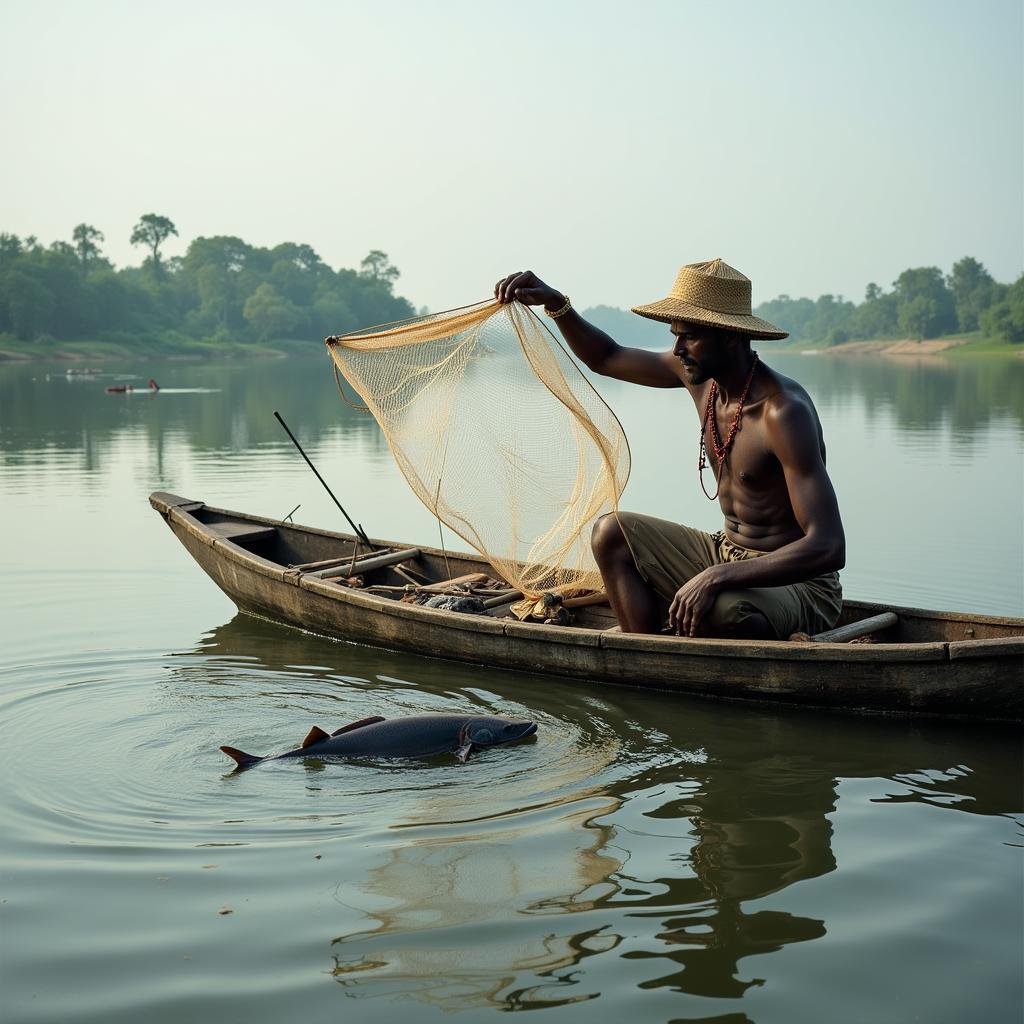African Catfish Threatening Indian Fish Species
The African catfish, introduced to India for aquaculture, is now posing a significant threat to native Indian fish species. This invasive species is outcompeting local fish for resources, disrupting the ecological balance, and impacting the livelihoods of traditional fishermen.
The introduction of the African catfish (Clarias gariepinus) to India several decades ago was intended to boost fish production and provide a readily available protein source. However, the aggressive nature and rapid reproductive rate of this species have led to unintended and detrimental consequences for the local aquatic ecosystems. These catfish are highly adaptable, tolerating a wide range of environmental conditions, and can even survive in polluted waters. This resilience, combined with their voracious appetite, gives them a distinct advantage over many native Indian fish species. african catfish threatening indian fish This issue is becoming increasingly problematic for the native fish populations and the overall biodiversity of India’s waterways.
The Impact on Native Indian Fish
The African catfish’s impact on native Indian fish species is multifaceted. Their competitive advantage stems from their ability to consume a wider variety of food, including other fish, invertebrates, and even plant matter. This puts them in direct competition with native species that have more specialized diets.
- Competition for Resources: African catfish outcompete native fish for food and habitat, leading to a decline in native fish populations.
- Predation: Larger African catfish are known to prey on smaller native fish, further reducing their numbers.
- Disease Transmission: The introduction of non-native species can also introduce new diseases and parasites to the local ecosystem, impacting the health of native fish populations.
The Ecological Consequences of Invasive Catfish
The ecological consequences of the African catfish invasion are far-reaching. The decline in native fish populations disrupts the natural food chain and can have cascading effects on the entire ecosystem. This can lead to a decrease in biodiversity and a shift in the overall balance of the aquatic environment.
 African catfish invading an Indian river ecosystem, outcompeting native species for resources.
African catfish invading an Indian river ecosystem, outcompeting native species for resources.
The Socioeconomic Impact on Fishing Communities
The proliferation of African catfish also has a significant socioeconomic impact on local fishing communities. Traditional fishermen, who rely on native fish species for their livelihood, are facing declining catches and reduced income. The market value of African catfish is often lower than that of native species, further exacerbating the economic hardship faced by these communities.
- Reduced Catches: The decline in native fish populations directly translates to reduced catches for fishermen.
- Lower Market Value: African catfish often fetch lower prices in the market compared to native species.
- Economic Hardship: These factors contribute to economic hardship for fishing communities that rely on native fish for their livelihood.
What are the Solutions to the African Catfish Problem?
Managing the African catfish invasion requires a multi-pronged approach. Effective strategies include promoting responsible aquaculture practices, raising public awareness about the issue, and implementing targeted control measures.
 An Indian fisherman using traditional fishing nets in a river impacted by invasive African catfish.
An Indian fisherman using traditional fishing nets in a river impacted by invasive African catfish.
- Responsible Aquaculture: Promoting best practices in aquaculture can prevent the escape of farmed African catfish into the wild.
- Public Awareness: Educating the public about the ecological and socioeconomic impacts of the invasive species is crucial.
- Control Measures: Implementing targeted control measures, such as selective fishing and habitat modification, can help manage the population of African catfish. african catfish threatening indian fishing The increasing presence of African catfish has been detrimental to traditional fishing practices.
Conclusion
The African catfish poses a serious threat to Indian fish species and the delicate balance of aquatic ecosystems. Addressing this issue requires collaborative efforts from government agencies, researchers, and local communities. By implementing effective management strategies and raising public awareness, we can mitigate the negative impacts of this invasive species and protect the biodiversity of India’s waterways. The long-term consequences of inaction could be devastating for native fish populations and the livelihoods of those who depend on them.
FAQ
- What is an invasive species?
- Why was the African catfish introduced to India?
- How does the African catfish impact native fish populations?
- What are the economic consequences of the African catfish invasion?
- What can be done to control the spread of African catfish?
- How can I help protect native Indian fish species?
- What are some examples of native Indian fish species?
Situations where these questions are asked
These questions might be asked in online forums, research articles, environmental awareness campaigns, or during discussions about the ecological and economic challenges faced by Indian fishing communities.
Further Exploration
Explore other articles on our website related to invasive species, biodiversity conservation, and sustainable fishing practices in India.
Contact Us
For further assistance, please contact us at Phone Number: +255768904061, Email: kaka.mag@gmail.com or visit us at Mbarali DC Mawindi, Kangaga, Tanzania. We have a 24/7 customer support team.



